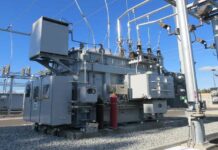Introduction:
Scaffolding-related incidents are one of the major causes of fatalities and injuries in the construction industry and they impact the lives of thousands of workers each year. According to the U.S. Bureau of Labor Statistics, nearly 45,000 workers are injured, and 60 lose their lives annually due to scaffolding accidents. What is significantly concerning is that many of these incidents, including falls, being struck by falling objects, or scaffold collapses can easily be prevented by providing construction relevant safety training to the workers and implementing relevant safety measures on worksites.
Did you know that in 2023 alone, falls from scaffolds led to 16 fatalities, while OSHA recorded 2,835 scaffolding safety violations?
These numbers highlight that implementing protocols for scaffolding safety is not only a moral obligation, but it is also a legal requirement that every employer should fulfill to keep their employees safe. In this blog post, we will shed light on the importance of scaffolding safety and how to assemble scaffolds properly.
Why should you conduct an Early scaffolding Inspection?
Since all scaffolding-related incidents are preventable, early hazard detection is a must to prevent accidents and stay compliant with safety regulations. Following are some of the reasons why you should inspect scaffolds before initiating work.
Legal Compliance: OSHA mandates the routine inspection of scaffolds to ensure workers’ safety. Every 7 days and before each shift, scaffolds must be inspected to check if any exposure to bad weather or other factors has affected their stability.
Scaling Down Risks: Potential hazards can be identified through early inspection, including structural weakness, bad assembly, and loose components that lead to scaffold collapses, falls, and related incidents.
Precautionary Maintenance: The wear and tear of the scaffolds can be detected through proper inspection, which gives time for repairing and replacement to stop further deterioration and accident possibilities.
Training and Drills: Employers are obligated to train their workers so that they can recognize potential scaffolding hazards and are equipped to tackle them. This stresses the need for a competent person to inspect and work on the scaffolds while sticking to best practices. Hazwoper Osha Training LLC offers OSHA Scaffolding Erection and Inspection Training for Competent Person training along with other construction relevant safety & compliance courses in flexible formats such as online, onsite, virtual instructor-led, and SCORM package. This ensures that you can opt for your preferred mode of training for your employees.
Best Practices for Assembling Scaffolds
Proper scaffold assembling is important to safely execute any construction project. Follow this step-by-step guide to learn how to assemble scaffolds like a pro.
1. Site Preparation:
· Ground Assessment:
The site should be inspected in depth to look out for potential hazards, including loose soil, debris, and terrain. Any debris or hindrance that can interfere with the stability of scaffolds should be removed. Make sure the ground is leveled and compressed and can support the weight of the scaffold, especially the weight of the expected load.
· Hazard Identification:
Look for hazards such as electrical installations, power lines, and related utilities within the designated area. To prevent electrical hazards, scaffolds must be assembled in an area which is at least 10 feet from the power lines. Identify the underground utilities to avert unexpected interference during anchoring.
· Environmental Factors:
While assessing the site for scaffold assembling, taking environmental factors into account is also important. Note down the wind condition, particularly for taller scaffolds, as you will need to implement additional bracing if needed. Keep away from areas that are susceptible to flooding and pooling.
2. Assembling the Base:
-
Arranging the Base Components:
Before you start the assembly, lay out all the components, including the caster wheels, ground anchors, and base plates, according to the scaffold design layout. Make sure the surface is level, firm and stable. Use spirit levels to ensure that the assembly surface is levelled properly.
-
Securing Base Plates:
Place the base plates on the prepared surface to make sure they are aligned as per the scaffold design. Use fasteners such as clamps and bolts to lock the base plate securely with the ground. To prevent any movement, ensure that the connection is secure and tight.
· Position the Caster Wheels:
Attach the caster wheel to each corner of the base plate and seal it securely. Engage the lock of the caster wheels to prevent any accidental movement of the wheels during assembly.
3. Erecting Vertical Poles:
· Placement of Vertical Poles:
According to the scaffold design plan, set up the vertical poles at uniformly spaced intervals. In the designated slots on the base plates or casters, insert the poles and make sure they are properly seated and aligned.
· Securing Connections:
Secure the vertical poles to the base plates using clamps and bolts. Make sure all the connections are tight and free of play.
· Add Diagonal Braces:
Strengthen and improve the lateral stability of the structure by installing diagonal braces. Connect the braces tightly to both ends before tightening the bolts. Stick to the manufacturers’ guidelines for configuration and spacing of braces to allow maximum stability.
4. Platform Installation:
· Platforms Placement:
Place the platforms horizontally, across the vertical poles, positioning them with the chosen supports and slots. Securely fasten the platform using clamps, a locking mechanism, and retaining pins.
· Check the Levelness:
Make sure each platform is perfectly horizontal by checking it with spirit level. Achieve the leveled surface by adjusting the positioning as required.
-
Distribution of Load:
Do not put heavy loads on a single platform. Instead, the weight should be evenly distributed across the entire scaffold and adhere to the manufacturer’s guidelines for maximum load capacity.
5. Final Testing:
-
Alignment Check:
Make sure that the scaffold is even (horizontal) and plumb (vertical). Use spirit level or other alignment tools to verify. Immediately fix any misalignments to ensure stability and prevent structure failure.
· Safety Assessment:
Thoroughly check every component to see if the clamps, bolts, and locking mechanisms are properly tight and secure. Check out for any missing parts, broken connections, and wear and tear signs that could compromise safety.
· Compliance with Load Capacity:
Ensure that the scaffold’s load capacity complies with OSHA’s safety standards and is suitable for the intended work. Consider the combined weight of tools, workers, and materials when calculating loads.
· Fixing the Issues:
Fix all identified issues to ensure that the scaffold is safe for use before workers can access it. For extra safety, do a second inspection to make sure all the issues have been addressed.
The Wrap Up
Providing employees with scaffolding safety training is the legal and moral obligation of employers. Proper assembly of a scaffold, routine inspections, and effective safety training will make your construction site accident-free. Employees can confidently work on scaffolds when they have updated training that teaches them hazard identification, correct scaffold assembly, and proper use of PPE. All these safety practices save lives and multiply employee morale, making it a long-term investment in any construction project.




























